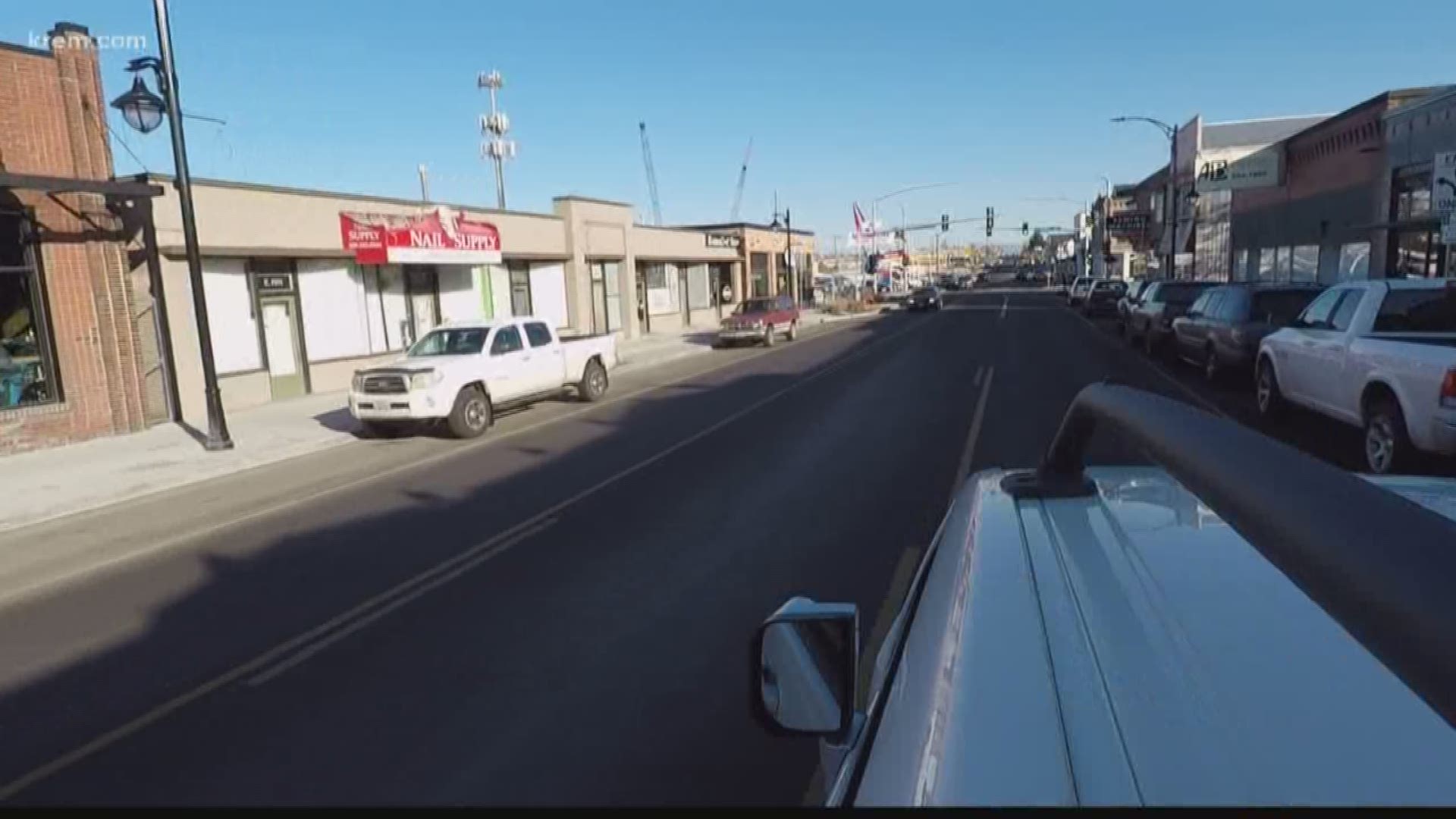SPOKANE, Wash. — The East Central neighborhood has deep roots in making Spokane the city it is today.
A community known for its diverse residents and unique, niche businesses, has seen its fair share of lows in its decades as a neighborhood.
According to city historical records, the East Central neighborhood was established in the late 1880s. It was a working-class suburb made up of immigrant laborers and railroad workers.
For many residents, a huge part of East Central’s evolution was when I-90 was extended through Spokane in the 1950s.
Jim Hanley, a lifetime resident and co-owner of the Tin-Roof furniture store on East Sprague Avenue, said the freeway cut the city in half.
"We were kind of in no-mans-land out here and the area kind of deteriorated,” Hanley said.
According to research from the Spokane Regional Health District, 1,000 homes were leveled in the area to make room for the freeway. Though families received reimbursements, many were unable to afford anything in the area and were displaced.
Over the years, the main drag through the neighborhood East Sprague Avenue became synonymous with the world’s oldest profession. When Expo '74 came to town it pushed illegal prostitution out of downtown and it eventually moved to East Sprague Avenue. The area quickly gained a reputation for hookers and johns prowling the streets.
In the 1990s, East Sprague became serial killer Robert Yates’ hunting grounds. He is believed to have murdered at least 13 prostitutes working the East Sprague area.
Hanley said it is terrible what happened, but it did spark more action from city and police.
By this time, Hanley and other business owners had begun to organize. Eventually, they would form the East Sprague Business Association. Business owners, residents and the city joined together to make some major changes in the area.
Sandy Tarbox, owner of Greencastle Soap located at 203 N Stone Street, moved into the neighborhood in 2005. Her handmade soap business is tucked away just a few blocks off Sprague. She said she was well aware of the area's reputation.
“Everybody said Sprague and Altamont! You can't buy a building at Sprague and Altamont and I said sure I can,” Tarbox said.
She said before she bought the building it often sat vacant except for the time of year a local radio station would rent it to be a haunted house. Tarbox bought the building simply because it was cheap.
"It’s been really a gift to be able to find a place that I can afford for a little tiny micro biz like this,” Tarbox said.
Tarbox recalls how she would often see transients in the area and once she even found the undergarments of a prostitute. But in recent years, she has noticed a real change in the area and she has not had many issues in general.
This has a lot to do with the revitalization efforts throughout the community. Business owners organized and they worked on looking out for each other and found ways to beautify the area. Police ran sting operations and the city put up anti-prostitution signs to clean up the streets.
In 2017, the city completed a $4.3 million revitalization project aimed at making the area more inviting and safer. And there have been countless projects, developments and new business endeavors that continue to move the community forward.
“You look back and you say 'wow' look at all we've been able to accomplish here, and we really have accomplished a lot, and we've got a lot yet to go,” Tarbox said.

